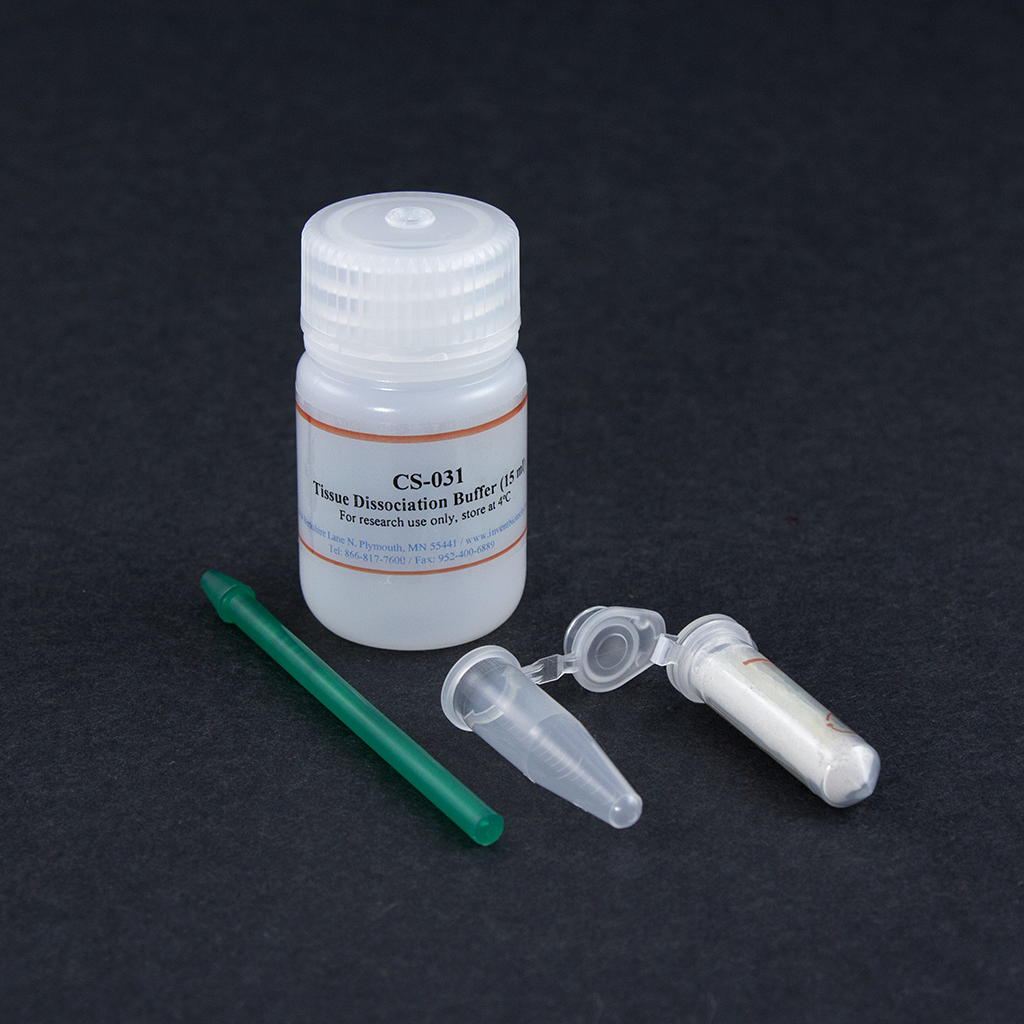Shipping calculated at checkout
Couldn't load pickup availability
Questions about this product? Ask our scientist!
Minute™ Cell Suspension Isolation Kit for Fresh/Frozen Tissues (50 Preps)
SKU:Cat #: CS-031
Manual & Protocol | MSDS
Obtaining quality cell suspension from fresh and/or frozen tissues is an important first step for subsequent analysis such as flow cytometry analysis (FACS) and nucleic acid purification. Cell suspensions can be isolated from tissues by one or a combination of the following three mechanisms: chemical tissue dissociation, enzymatic digestion and physical separation. Many methods are tedious and time consuming. Most importantly, cells in the tissue, especially frozen tissue, are usually damaged and show low integrity and viability. It is very difficult to obtain high viability cell suspension from frozen tissues with high connective tissue contents such as liver, kidney and brain tissues. We have developed a simple, rapid, efficient, and instrument-free method for isolating cell suspension from fresh or frozen tissues using a combination of chemical cell protection and physical separation mechanisms. The protocol can be finished in about 20 min with higher cell integrity and viability.

Kit includes:
|
Items |
Quantity |
|
Tissue Dissociation Buffer |
15 ml |
|
1.5 ml Microfuge Tube |
50 units |
|
Pestles for 1.5 ml Tube |
2 units |
References (3)
1. Zhang, X., Zhang, X., Li, X., Ma, J., Xie, D., & Jiang, N. (2020). Dishevelled-1 regulated apoptosis through NF-κB in Cerebral Ischemia/Reperfusion Injury in Rats. Neuroscience Letters, 134862.
2. Xu, H., Liu, L., Cong, M., Liu, T., Sun, S., Ma, H., ... & Wang, P. (2020). EGF neutralization antibodies attenuate liver fibrosis by inhibiting myofibroblast proliferation in bile duct ligation mice. Histochemistry and Cell Biology, 1-10.
3. Hamamura, K., Yoshida, Y., Oyama, K., Li, J., Kawano, S., Inoue, K., ... & Aritake, K. (2024). Hematopoietic Prostaglandin D Synthase Is Increased in Mast Cells and Pericytes in Autopsy Myocardial Specimens from Patients with Duchenne Muscular Dystrophy. International Journal of Molecular Sciences, 25(3), 1846.

